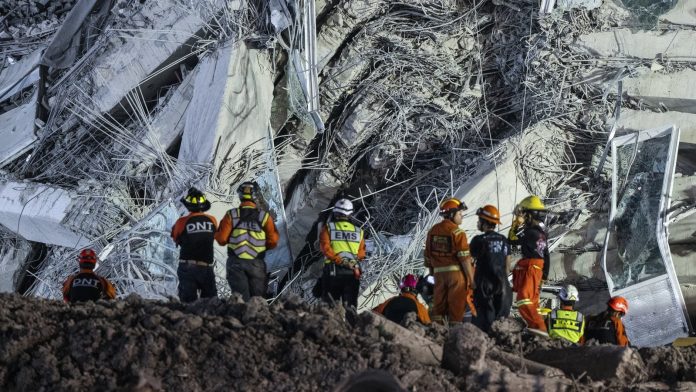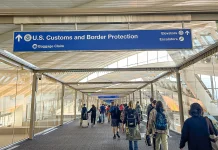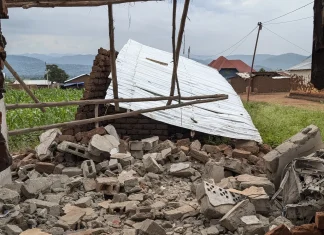The Collapse That Shook Bangkok: Unraveling the Tragedy Behind the High-Rise Disaster
On a seemingly ordinary March day, the bustling heart of Bangkok was shaken—not just by a distant earthquake, but by an event that would leave a scar on the city’s conscience. The tremors rippled across Southeast Asia, triggered by a powerful 7.7-magnitude earthquake in neighboring Myanmar on the 28th of March.
While Myanmar bore the brunt of nature’s wrath, it was Bangkok that witnessed a calamity striking closer to home: the sudden collapse of a gleaming 30-storey high-rise, the very building earmarked to house the state audit office. In seconds, concrete and steel rained down, extinguishing 89 lives, most of them construction workers laboring with hopes of progress.
This was no ordinary structural failure—this was a catastrophe born not merely from natural forces but from potential human error and negligence. The tragedy stirred a wave of grief, legal action, and demands for accountability in the Kingdom of Thailand.
A Tower Reduced to Rubble: Anatomy of a Disaster
What haunted Bangkok wasn’t just the tremor that originated hundreds of kilometers away but the question—how did such a modern skyscraper, built to withstand formidable shocks, crumble in mere seconds? As other buildings wobbled but stood tall, this was the lone tower to disintegrate, offering a stark, devastating anomaly amid the urban skyline.
“The speed of the collapse was unprecedented,” reflected Somchai Rattana, a civil engineering professor at Chulalongkorn University. “Skyscrapers today are engineered with strict seismic standards, especially in regions prone to earthquakes. For a building to fail so suddenly, it signals serious flaws.”
Photos of the aftermath showed twisted reinforcements and shattered floors, the charred remains of hopes and ambitions. Families mourned those lost, many of whom were migrant workers striving to secure livelihoods in a foreign city. A tragic irony enveloped the accident: a structure intended to house government scrutiny itself is now under scrutiny for its fallibility.
The Legal Battle Begins: 23 Indicted, Accountability in Sight
Soon after the dust settled, the wheels of justice began turning. Thailand’s Office of the Attorney General has officially indicted 23 individuals and companies linked to the construction and design of the doomed building. This group includes not just local firms but also international players — notably a Chinese construction company and an architectural firm associated with the project.
“Our investigation uncovered evidence of professional misconduct and forged documents,” declared a spokesperson for the Attorney General’s office. “This is not just about structural integrity; it’s about ethics, transparency, and public trust.”
Among those indicted: Premchai Karnasuta, a prominent figure in Thailand’s construction industry and executive director of Italian-Thai Development (ITD), one of the country’s largest construction firms. Premchai, a name synonymous with towering projects and big business, is no stranger to controversy. He was convicted in 2021 for poaching protected wildlife, a scandal that gave a glimpse of how power and privilege intertwine with the rule of law. Now at the age of 71, he faces up to 10 years in prison and considerable fines if found guilty. He was placed in pre-trial detention in May.
Notably, ITD, the company in which Premchai holds nearly 12% of shares according to the Stock Exchange of Thailand, has also been indicted. The spotlight intensifies as investigators probe the company’s practices, quality controls, and the fate of the materials used to build the now infamous tower.
The Human Toll: Beyond the Headlines and Courtrooms
Numbers often fail to capture the full scope of such a tragedy. Behind the 89 confirmed fatalities lies a mosaic of lives—workers from diverse backgrounds, some migrants, all driven by hope and aspiration. Chaiya, a Thai construction laborer who lost his childhood friend in the collapse, spoke with a heavy heart: “We always knew construction was dangerous, but this… this was beyond anything. They told us the building was solid, safe. Now, we have nothing but grief.”
For the community living near the site, the disaster shook more than the ground—it cracked their faith in the development around them. Vendors who once thrived on the construction site’s bustling workforce have faced sudden economic hardship, their daily rhythms upended.
Material Questions and Construction Standards
Independent observers and experts wonder: Were substandard materials to blame? Was the imported steel of inferior quality? Or did cut corners on safety codes silently plot the tragedy? Investigations by Thailand’s justice department had previously cast doubt on the quality of materials used at the site, raising the specter of negligence that, in the language of engineering, translates to preventable catastrophe.
Narong Chatchawan, a structural engineer with decades of experience, noted, “In any disaster, first you look at materials, design, and execution. With earthquakes, these three pillars must be impeccable. If one fails, the whole structure is at risk.”
A Global Story Wrapped in Local Threads
Readers might pause here and ask: Why does the collapse of a Bangkok high-rise feel like more than a regional concern? Because this story intersects with global issues—migration, urbanization, the pressures of rapid development, and the dark underbelly of corporate malpractice.
Across the world, cities race skyward, driven by population booms and economic ambitions. But speed often undermines safety. Workers, many from vulnerable communities, build the skylines that define modernity yet frequently pay the highest price for failures in governance or ethics.
Thailand’s tragedy echoes stories from Istanbul to San Francisco, reminding us that a quake’s ripples are often felt most profoundly not in miles, but in the foundations laid by human hands and systems.
What Can We Learn? A Call for Change
This disaster is a sobering prompt for policymakers, builders, and communities everywhere. It challenges us to ask:
- Are our building codes rigorous enough to protect lives?
- Do transparency and accountability exist when massive projects unfold?
- How can worker safety be prioritized in the quest for urban growth?
The story of Bangkok’s fallen tower is not just a legal case or a construction failure—it’s a mirror held up to societies worldwide, reflecting the costs of unchecked ambition and complacency.
Looking Forward: Justice and Healing
The indictment of 23 individuals and firms offers a glimmer of hope that justice will unfold with transparency and rigor. As the case moves toward criminal courts, many await answers—answers that respect the memories of the lives lost and ensure such a tragedy never repeats.
For Thailand, this episode is a watershed moment, a painful but necessary reckoning. And for global readers, it’s a moment to reflect on the weight behind the buildings we inhabit and the human stories embedded deep within their walls.
As you close this story, ask yourself: In our own cities, what invisible cracks might be hiding, waiting to be addressed? What responsibilities do we all share in safeguarding the spaces where life happens?
This is more than a report—it’s a conversation, unfolding in real time, in hearts and courts, across nations.










